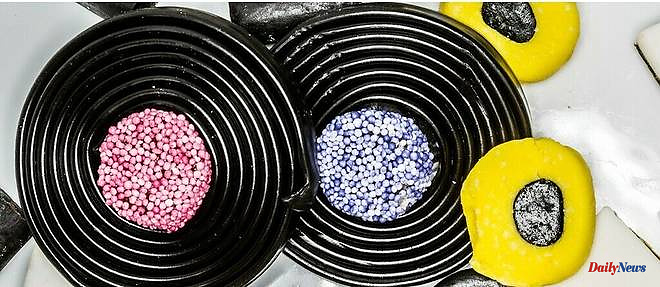Too much liquorice consumption is not recommended for people with cardiovascular diseases. In 2019, a man with high blood pressure was hospitalized after he got into the habit of drinking two cups of licorice tea a day. A consequence far from surprising for doctors: "If consumed in excess, products containing licorice root extract can increase blood pressure, cause fluid retention and decrease potassium levels. »
And it would seem that licorice is also not harmless for healthy people who have never suffered from hypertension. The National Health Security Agency (ANSES) conducted a study between 2012 and 2021 in conjunction with poison control centres. It shows that 64 people were poisoned following the consumption of drinks or foods containing liquorice. "In 42% of cases, they presented serious symptoms: high blood pressure, heart problems caused by too high a potassium level in the blood... Sometimes going so far as to be life-threatening", lists ANSES. One death has also been reported in a person with severe liver damage. Two poisonings have been reported in children aged 10 and 12 after consumption of Antésite with liquorice.
The guilty ? Glycyrrhizin contained in licorice root. As detailed by ANSES, it "is used in many products, such as candy, chewing gum, snacks, bakery products, ice cream and sorbets. It is also found in soft drinks and syrups, alcoholic drinks based on licorice extracts (pastis, ouzo, raki, etc.), non-alcoholic pastis, beers and food supplements”. Hence the possibility of significant consumption without even realizing it.
Some drugs, like diuretics, cause a loss of potassium in the urine, a phenomenon amplified by glycyrrhizin. “The risk of toxicity is a function of the product consumed and the person exposed. The body's reaction to glycyrrhizin varies greatly from one person to another: absorption in the intestine, circulating glycyrrhizin level, enzymatic activity,” reports ANSES.
So, to avoid any risk of poisoning, the Health Agency recommends not to exceed a consumption of 10 milligrams per day of glycyrrhizin. What does it correspond to ? "For example, 100 mg of glycyrrhizin corresponds, depending on the concentration of the product, to approximately five doses of 15 drops of Antésite, 4 to 50 doses of 2 cl of pastis with alcohol, or 60 to 100% of a box of 6 grams of confectionery made from pure licorice extracts, such as catechus”, summarizes ANSES. In addition, it is advisable not to multiply the intake with different foods, medicines, food supplements, etc. The presence of liquorice is also specified in the food composition. Finally, it is advisable to avoid continuous consumption of products containing liquorice.












